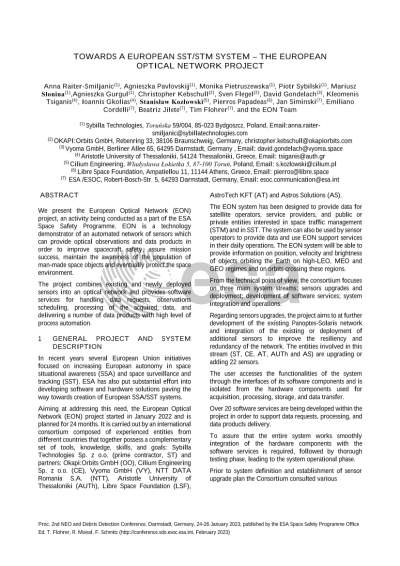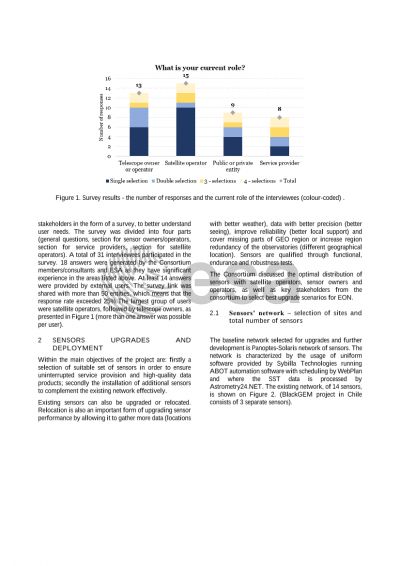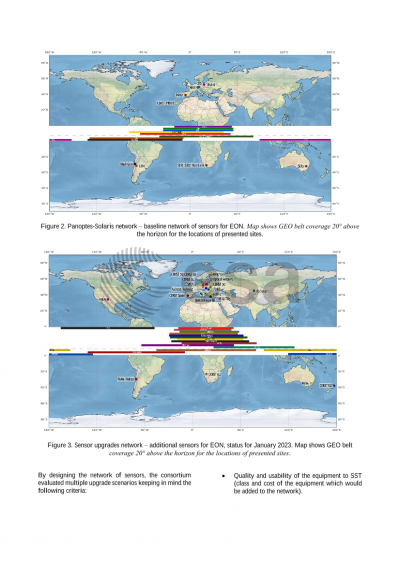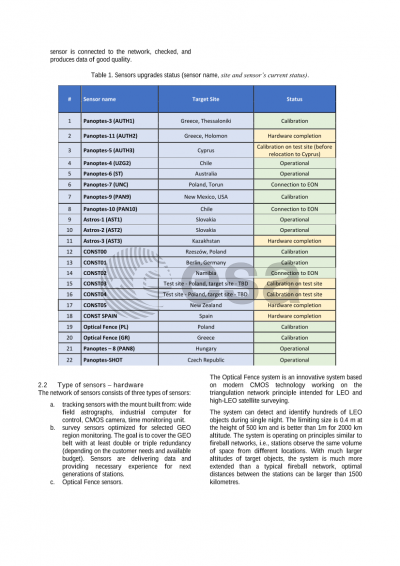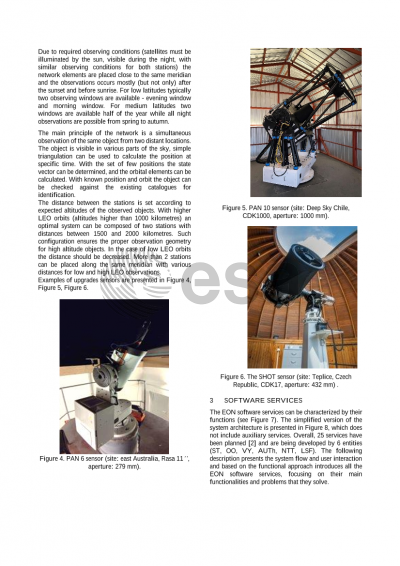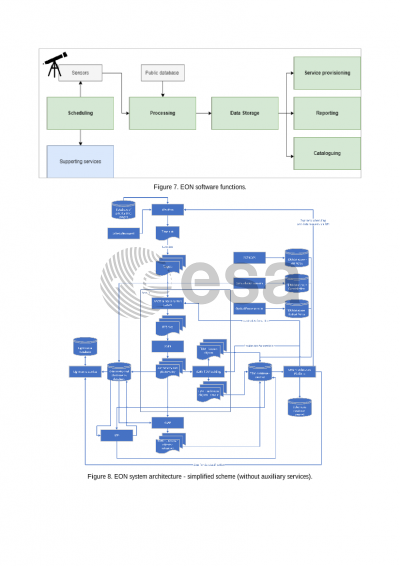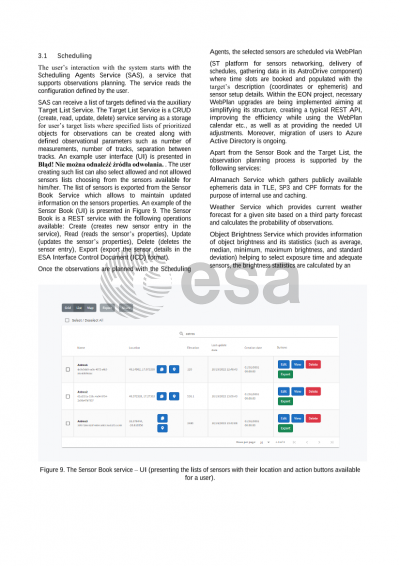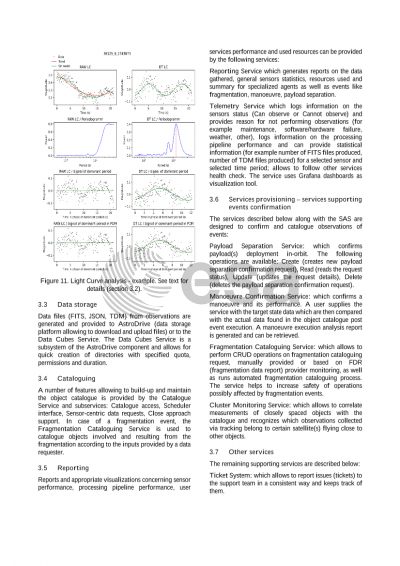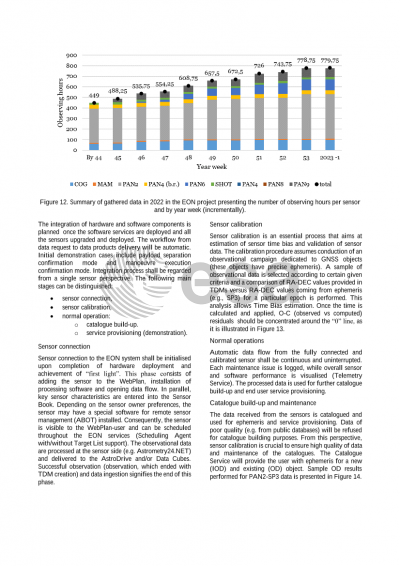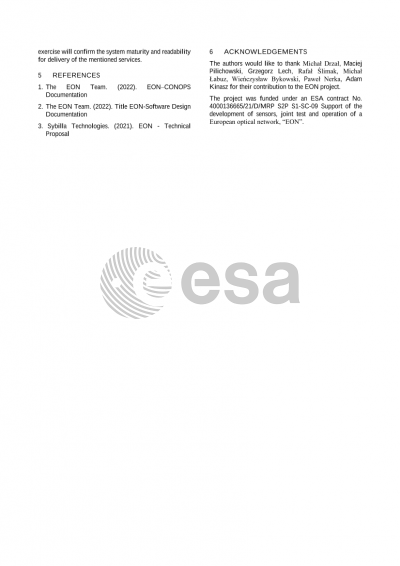Document details

Abstract
We present the European Optical Network (EON) project that started in January 2022. The activity is conducted as a part of ESA Space Safety Programme and will be a technology demonstrator of a network of sensors that can provide optical observations and data products to improve spacecraft safety, mission success, and protect the space environment in long term.
The EON project aims to combine existing and newly deployed sensors into an optical network and to provide software services for planning observations, handling data requests, processing the acquired data, and delivering data products with high level of the process automation.
This system will be able to provide information on position, velocity and brightness of objects orbiting the Earth on high-LEO, MEO and GEO regimes and on orbits crossing these regions. The system has been designed to provide data for satellite operators, service providers, and public or private entities interested in space traffic management and in space surveillance and tracking. The system will also be used by sensor operators to provide data and use EON support services in their daily operations.
The project is carried out by an international consortium composed of experienced companies from different countries that together possess a complementary set of tools, skills, and goals: Sybilla Technologies Sp. z o.o. (prime contractor, ST) and partners: Okapi:Orbits GmbH (OO), Cilium Engineering Sp. z o.o. (CE), Iguassu Software Systems (IG), Vyoma GmbH (VY), NTT DATA Romania S.A. (NTT), Aristotle University of Thessaloniki (AUTH), Libre Space Foundation (LSF), AstroTech KFT (AT), Astros Solutions (AS).
The project main elements are the sensor, the software, and the integration. In the paper we will present all of them focusing on the main ideas and introducing recent achievements.
Sensors updates: the project aims to further develop the existing Panoptes-Solaris network and integrate existing or deploy additional sensors to improve the resiliency and redundancy of the network. The entities involved in this stream (ST, CE, AT, AUTH and AS) propose to upgrade or add at least 18 sensors. The status of the deployment, first light, calibration and operational data delivery will be presented from the telemetry, data quality, timeliness, and catalogue perspectives.
Software: the user accesses the functionalities of the system through its interfaces and is isolated from the hardware components used for acquisition, processing, storage, and data transfer. Within the project over 20 services supporting data requests and data delivery have been planned. The consortium will present the status of their development, deployment, and operation. Among presented services there will be Sensor Book service allowing the management of up-to-date information on the sensors’ properties and a Target List service used for storing lists of requests for observation, Catalogue Service for up-to-date catalogue based on optical data and Scheduling Agents service for execution of data requests. Work is ongoing on several other services such as Light Curve Service, fragmentation follow-up observations.
Integration: a large effort is needed to integrate the hardware components together with the services to build up one smoothly working system. Some of the initial test results and operational lesson learned will be presented.
Preview
